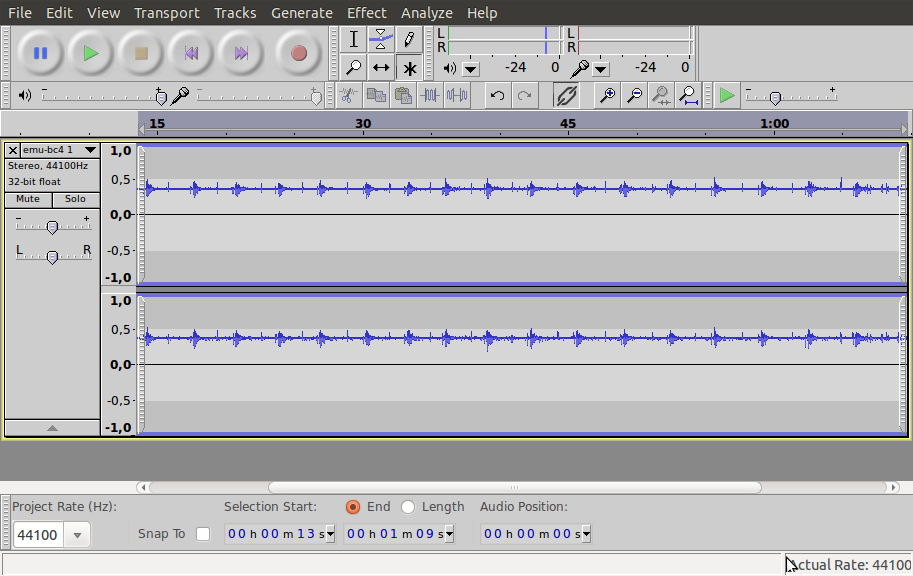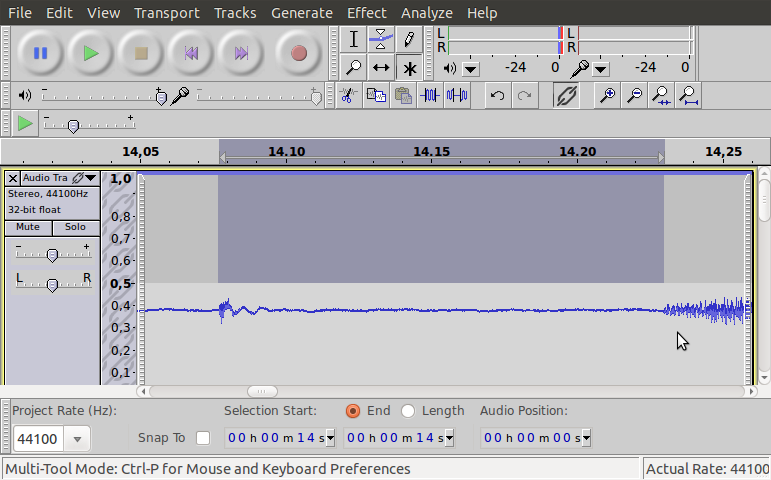Warning: I need to work again on these measures. I took some more measures for the wireless sixaxis. These measures are not consistent with my earlier values :s For these new measures, the average game response time with the wireless sixaxis is about 150ms. All values in this post have to be confirmed. EDIT: See my next post.
No suspense: it’s not good.
I measured the average delay between a gunshot action and its corresponding gunshot sound (in BF:BC2).
- Real wireless sixaxis: 125ms
- Real wired sixaxis: 139ms
- Sixaxis emulator: 168ms
Note that this isn’t the controller latency. This is the overall latency for a gunshot.
The difference between two values gives the controller latency difference.
The sixaxis emulator adds a 43ms latency. That’s more than 1 or 2 frames (40ms@25fps, 33ms@30fps, 17ms@60fps). Not good at all.
I should take some measures with a FPS on PC.
125ms seems to be very high for a descent game controller.
The wired sixaxis gives more latency than the wireless one… not as expected.
Methodology:
– plug a microphone on the PC
– start audacity
– start a FPS on the PS3
– put the microphone on the device to test (sixaxis or mouse)
– adjust the volume of the game so that gunshot actions/sounds are recorded
– start recording in audacity
– repeat the gunshot action (empty the cartridge of a pistol) with ~2s delays
– stop recording
– get measures between gunshot actions/sounds and compute the average
I don’t know how precise it is to measure the game latency, but it’s at least good enough to compute a latency difference.
Following images are screen-shot examples of the audio wave:

 As you can see in the second screen-shot, there are two events: the gunshot action (mouse clic) and the gunshot sound. It shows a capture recorded with the sixaxis emulator. The delay was about 150ms for this gunshot.
As you can see in the second screen-shot, there are two events: the gunshot action (mouse clic) and the gunshot sound. It shows a capture recorded with the sixaxis emulator. The delay was about 150ms for this gunshot.
EDIT:
I took measures for Counter Strike Source in Win7. I get a 188ms average response time for a gunshot.
Although all the measured values seem very high, it seems the real sixaxis and the sixaxis emulator are not that bad… compared to CSS results.

Wow those numbers seem kind of high. If I recall correctly, a frame is just under 17ms.
I remember reading somewhere the a real sixaxis always connects wirelessly even when using the usb cable but that could have been misinformation.
http://shoryuken.com/f177/do-wireless-360-ps3-pads-lag-any-reason-stick-wired-pcb-165659/index2.html#post5771841
Here on post #40 A guy tested the sixaxis vs his wired controller and also found that sometimes wireless was slightly faster than wired.
Which pistol where you using?
@Joe
I'm measuring the overall latency, not the latency of the game controller. Values seem very high, but it's similar to values for a FPS played on a PC.
The frame duration depends on the game, and on the complexity of the graphics. Considering that during a fight in a FPS the graphics are very complex (it moves a lot), and that the minimum fps for a game to be playable is 25, the maximum frame duration is 40ms.
Thanks for the link, the methodology seems correct. Note that the guy is not measuring a latency, but a latency difference with frame as unit.
@Jeremy
The tests on the PS3 were performed with BF:BC2, with the default pistol.
The tests on the PC were performed with CSS, with the default pistol.
Another very interesting test protocol: link.
It consists in recording a video with both the controller hand and the display in the same shot. Count the number of frames between the action and the game response, multiply by the frame time, this gives the game responsiveness.
The values he measured are near my own ones. For ex, he measured 166ms (10/60) for a gunshot in GTAIV.
My technique is a lot easier, and it seems to be more accurate: I estimate measuring the sound gives a +/-5ms error, counting video frames gives a +/- 1 frame error (17ms @60fps, 33ms @30fps).
Just wanted to say keep up the work 😉 I'll be getting my dongle soon!
es I think measuring sound is more accurate. Some televisions and monitors have lag because of post processing. I dont believe there is any processing for the sound.
Ditto on keep up the good work!
Some of my measures are not good. I will take new ones and update this post ASAP.
New measures in my next post.